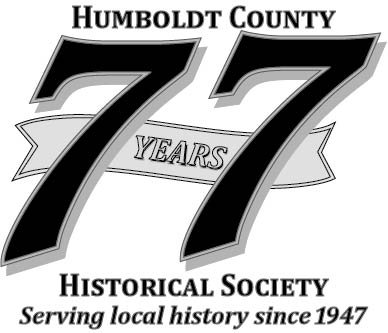Unstable Humboldt
In a contentious, crisis-ridden world, at times Humboldt County might seem the soul of calm and stability. But it has not always been the case.
With the discovery of gold in 1849, the population dynamics of northern California shifted dramatically. A large area was flooded with gold seekers and with those wishing to supply their needs from new coastal communities. These settlements also promised new agricultural and timber resources thus attracting even more people. As a result, the state legislature decided to redraw the existing county boundaries and formed a new county on the coast naming it after its recently “discovered” bay – Humboldt.
The question then arose as to where to place the county seat. In an 1853 election, the county’s relatively few voters chose the town of Union, now called Arcata. Immediately other localities, particularly Eureka, the home of some influential businessmen, and Bucksport, the location of Fort Humboldt, contested the results and demanded a new election. That was held in October of 1854, but with no community commanding a majority yet another election was called for the following month.
This one was perhaps our most scandal-ridden election of all times. Bribery, voter intimidation and ballot stuffing were rife. Hundreds more ballots were cast than there were actually voters. A prime example was Angel Ranch precinct which had about 20 eligible voters, and a great many more sheep, but which returned 2,136 ballots.
The results meant that the county seat was once more granted to Union. But discontent continued, and two years later Eureka businessman and major property owner, Casper Riggs, was elected to the State Assembly, and apparently with little local notice he persuaded the State to award the county seat to Eureka. In the dark of night, county records were moved to a small office in Eureka, but ill feelings continued between the two communities for decades.
The County rented that space, located probably on First Street, for $400 a year until 1861 when a new facility was established in a remodeled mill workers bunk house at Second and K Streets. Then in 1884, a far grander structure was built to reflect Eureka’s Victorian pride and prosperity. It was capped with a clock tower atop of which stood a bronze statue of Minerva, the Roman goddess of wisdom.
Structurally the grand building suffered over the years. The 1906 earthquake tilted Minerva dangerously. Twelve other divine statues were removed, but Minerva remained until years later when her deteriorated spear fell through the roof of a courtroom scattering glass and metal shards everywhere. In 1924, a fire set off by a painter’s blow torch spectacularly damaged the tower, so that it was eventually condemned and taken down. The clock itself was removed to the County fairgrounds in Ferndale.
Then in 1954, another earthquake so damaged the entire building that after several years of controversy it was demolished. Films and photos recording the process show how demolishing that beloved and very resilient structure was no easy task. Today, many architectural historians still bemoan the replacement of our elegant landmark with the boxy 1960s structure that now serves as Humboldt County’s courthouse.
Today, records about our county and its courthouses are preserved at the Humboldt County Historical Society. Looking at those records now, only serves to confirm that the present, seemingly stable or not, is really only part of an ongoing river of change – and sometimes controversy.

